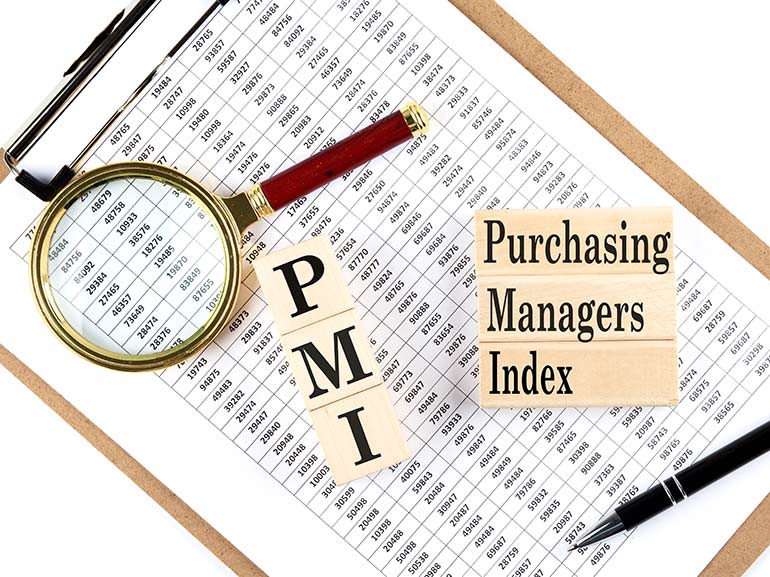What Is the Purchasing Managers' Index (PMI)?
The manufacturing industry is a strong player in the overall market as it was able to sustain growth in the past couple of years in face of economic headwinds ranging from inflation to those brought about by the coronavirus pandemic.
Therefore, given this sector’s importance to the overall economy, traders, investors, and analysts alike may want to keep an eye on its trajectory and growth. Luckily, this can be done through the Purchasing Managers’ Index (PMI) which is reported on a monthly basis. So what is PMI exactly, how is it calculated, and what does it reveal about the economy? Here’s PMI explained:

What Is PMI?
Purchasing Managers Index, otherwise abbreviated as PMI, is an index that gauges the manufacturing sector’s economic trajectory and includes a diffusion index that indicates whether market conditions change or remain stable over time. PMI is used to provide decision-makers, analysts, and investors with information covering current and future business conditions. (Source:Investopedia)
How Is the Manufacturing PMI Derived?
It is important to note that the PMI is a survey-based index. As such, supply chain managers from the manufacturing and services sectors in over 40 countries get surveyed every month to get the data for this index. Furthermore, the countries used to derive the PMI data comprise about 90% of the global economy’s GDP.
The PMI is considered an economic indicator and its data is then referred to by market watchers, analysts, traders, and investors alike to understand the growth, stability, or downtrends in the manufacturing sector.
The Three Principal Producers of PMI Surveys
When talking about PMI, there are three principal bodies that should be noted. These are the Institute of Supply Management (ISM), the Singapore Institute of Purchasing and Materials Management (SIPMM), and the S&P Global. Each of these associations conducts a monthly survey by surveying businesses that belong to their respective industries.
ISM PMI
The Institute of Supply Management (ISM) is a US-based educational body responsible for the development of manufacturing and non-manufacturing measurements in the US. It was founded in 1915 and offers a wide range of education, training, qualifications, publications, and resources on supply management.
Each month, the ISM conducts its PMI survey which covers all North American Industry Classification System (NAICS) categories and collects data from over 300 manufacturing firms. Furthermore, its data is considered to be among the US’ most anticipated and reliable releases and, since it's published on the first business day of the month, it is also considered one of the earliest economic indicators.
SIPMM PMI
The Singapore Institute of Purchasing and Materials Management (SIPMM) is a non-profit association that was established in 1972 in Singapore. This association works to enhance the purchasing, logistics, and materials chain management and is part of the International Federation of Purchasing & Supply Management (IFPSM).
Each month, the SIPMM publishes its Singapore PMI survey which is based on data gathered from all manufacturing industries in which over 150 managers from various industrial companies are surveyed.
S&P Global PMI
S&P Global is a New York-based corporation that focuses on providing financial and analytical data in various industries and it is the subsidiary of S&P Global Ratings. Originally, S&P Global Inc. was called McGraw Hill Financial, Inc and The McGraw-Hill Companies, Inc. until it changed its name to S&P Global Inc. in April 2016.
The S&P Global PMI is also released on a monthly basis and is based on the responses of manufacturers and services from about 28,0000 businesses in 40 countries.
PMI Advantages and Disadvantages
The PMI, like most indices, can have its own pros and cons. Some of the advantages of the PMI include the fact that it happens on a monthly basis and on the first business day of the month. Therefore, it is considered an early and convenient index that gauges economic performance.
On the flip side, since the PMI only measures the manufacturing sector’s performance, some might think that it might not reflect the rigor of the US economy as it should due to the fact that the manufacturing sector’s prowess may have diminished over the years.
What Do PMI Levels Indicate?
Generally speaking, PMI levels over 50 may suggest that the US manufacturing sector is growing MoM. On the other hand, a reading of 50 means businesses that are performing well and those that are underperforming are equal in terms of their amounts.
Why Is the PMI Important to Traders?
The PMI is an important gauge of the economy and can be weighed by investors and traders in their decision-making as it reflects the state of the economy and its health. In addition, the PMI can affect the commodity market. This is because improvements in PMI rates can heighten the demand for commodities which could drive commodity prices as well and vice versa.
Moreover, PMI can be an indicator of inflation rates since high PMI levels can suggest increased inflation which can also come into account when talking about the Federal Reserve’s and other central banks’ decisions. And, it might not come as a surprise to learn that PMI can have direct effects on related stocks.
Due to this, therefore, traders may want to keep an eye out for the upcoming PMI releases this year to see how the economy has been faring in the face of inflation, recession fears, and the war in Ukraine.
